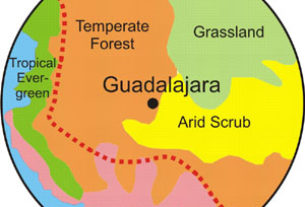“Oh, I don’t know how Mexicans can drink something as strong as tequila!”
I’ve heard that remark many times, a statement not entirely in line with what is happening nowadays with our national beverage.
With new ideas and regulations on tequila in this country, a revolution has taken place in the world of this Mexican apéritif par excellence. For one thing, after many years of international lobbying and litigation, Jalisco finally got the recognition it wanted for tequila: the so called denominación de origen. This means that only tequila from a clearly defined region inside the state of Jalisco can bear that name. This is the same as happens with brandy produced in Cognac and the sparkling white Chardonnay made and bottled in Champagne.
As a result of this decision, several producers, following the example of Eduardo González of Tres Magueyes, have developed and marketed a new kind of commercial tequila: the limited editions of Grandes Reservas del Patrón ; very fine, highly regarded, pricey tequilas, such as Tres Magueyes’, Don Julio, and Dos Amigos’ La Cava de Don Agustín. So quality and prices have gone up in certain sectors of the industry. In fact, quality is perceptibly improving in every sector, due to the pressure exerted by the new international status of the liquor and the huge business that lies in the high quality arena.
The tequila region comprises three important zones: Tequila, Atotonilco and Arandas. (Products are in Bold)
- The more commercial brands come from Tequila, such as Sauza and Cuervo.
- Very mellow, soft beverages are produced in Atotonilco, as Don Julio and Siete Leguas’ Tequila D’Antaño.
- It is customary in Arandas to produce more strong concoctions, such as El Centinela and Cazadores – with notable exceptions, such as the soft and extraordinaries Tesoro de Don Felipe and La Cava de Don Agustín.
- Finally, Arenal and Amatitán are considered part of the Tequila zone itself. Amatitán produces one very popular and fine brand: Herradura.
As with other liquors, tequila, after the distillation process, is kept in wood to add smells, flavors and colors to it. In addition, the aging process takes the more sharp edges out of the beverage.
- Tequila blanco, white tequila, has little or no aging at all.
- Tequila reposado, around one year in the cask;
- and finally, the añejo gets from one to three years of wood.
One important thing you should look for in the label is the legend, ‘100% Agave’, meaning the tequila complies with government regulations as to its content of blue agave. It is customary to add cane sugar to the aguamiel, or agave juices, before the fermentation process. This practice helps to keep costs down, but it is not really in line with the old, traditional ways that give a fine tequila its distinctive and exceptional taste.
I hope all of the above may help you to choose the tequila you are looking for. If you want a soft, mellow, wood scented and very attractively flavored beverage, to drink straight, try something from the Grandes Reservas, añejo or reposado, and of course 100% Agave. White tequilas are best for cocktails like Margaritas. (But here in Jalisco, the true connoisseurs say that the only ‘real’ tequila is tequila blanco, and they don’t even taste a reposado or añejo.)
Tequila, being a distilled liquor similar to cognac or anisette, could be considered a digestive, to be drunk after meals. Not so. It is an apéritif, to be enjoyed before eating, to warm and tone you up, so to speak. If you are lucky enough to have access to one of the magnificent Reservas described above, avoid the salt and lemon and enjoy the masterpiece in its grand solitude. Use all of your senses; appreciate the soft colors and movement inside your clear caballito – pony glass -; smell the subtle aromas from the blue agave – a great tequila will never assault your nose with an alcohol punch -; with your palate, savor the mellow, non aggressive flavors of a truly first class liquor. Much better if you a have a friend to share the experience with: then you can make the glasses sing for you.
And, above all, forget about fast foods and fast drinks and business while you dine. Savor your tequila in peace. Then attack your botanas and the rest of your meal in good company and humor, as civilized and well educated people do.
Blessed is he who has a friend,
and time to spare and share.


